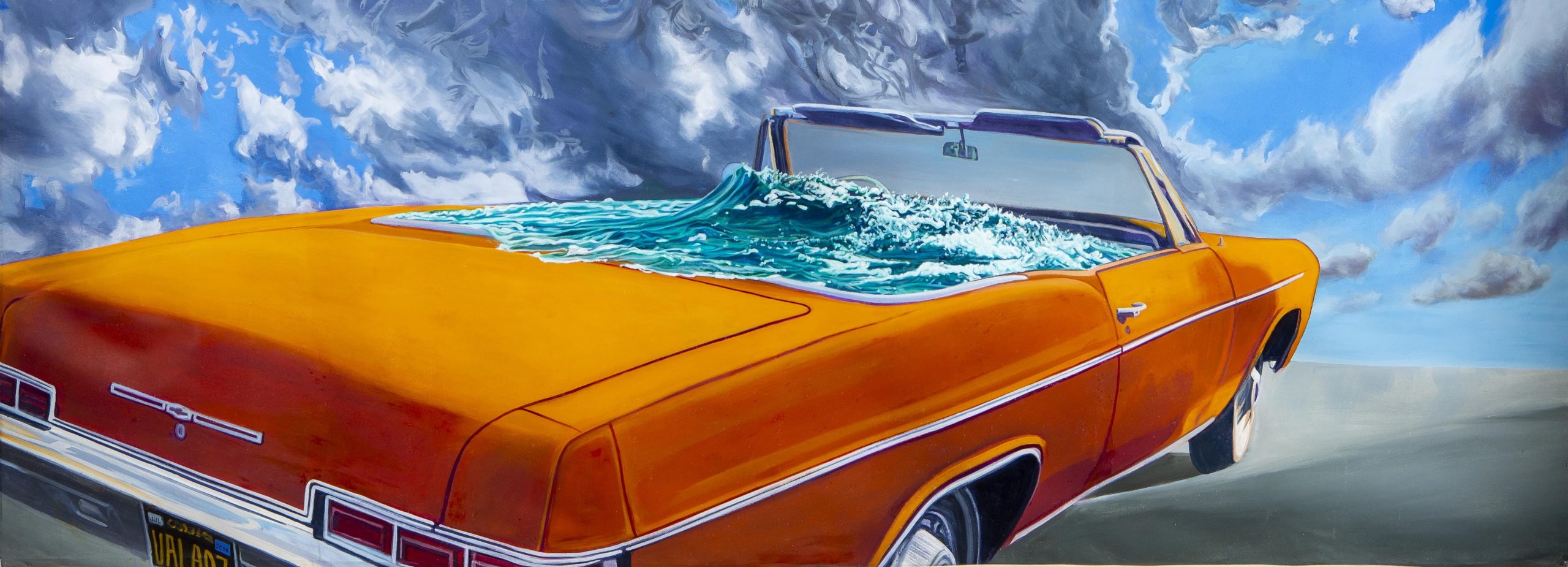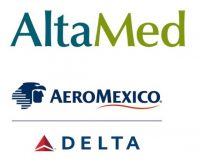
While appearing to be a simple, innocuous punctuation mark used for joining words or demarcating the syllables of a single word, the hyphen is a much more powerful symbol capable of uniting just as easily as it can divide. As a bridge, the hyphen can bring together two cultural identities, such as “Mexican-American” or “African-American”, allowing both cultures to co-exist while maintaining their distinct characteristics. However, in keeping with its nature, the hyphen isolates and differentiates in order to highlight the specific qualities of the words it is actually separating.
“Mexican-Americans”, “Latino-Americans”, “French-Canadians”, are hyphenated groups who are active in more than one sphere. Cars are metaphoric hyphens. Although they isolate us from the rest of the world, they can be consciously, actively exercised to traverse new experiences and places.
Centered around the freeway capital of the world, Los Angeles Chicano culture naturally drinks deeply of the ultra-mobile-four-wheeled civilization of the 20th century. It was this popular fascination that created the “Low Rider”, one of Chicanismo’s major gifts to modern technology. And naturally, Chicano art reflects the Eastside Aztlan’s almost spiritual obsession with the car in general — the vintage Chevrolet in particular — as a symbol of freedom, mobility, sanctuary and transcendence.
The mobile culture of the 20th century brought a sense of freedom, allowing individuals to traverse far and wide, moving beyond their neighborhoods and cities. The vehicles which were used provided escape, exploration, expansion, and growth both literally and metaphorically. In a sense, the cars themselves act as vehicles of transformation. And, similarly, neon serves as a metaphor for transformation and transcendence, as it also straddles two worlds — historic and modern — like those of Mexican and American heritages.
By actualizing their vision during the creative process or by reaffirming their artistic and cultural identity, the artists in this exhibit have allowed themselves to transcend social labels and move beyond others’ perceptions of who they are based on strict geographical boundaries.
Julian Bermudez
Building Bridges in Time of Walls is an unprecedented collaboration between AltaMed Health Services and the Instituto Nacional de Bellas Artes y Literatura. In partnership with Mexico’s Secretary of Culture, Alejandra Frausto Guerrero and the director of the Instituto de Bellas Artes y Literatura, Lucina Jiménez, Building Bridges is presented by Cástulo de la Rocha, President and CEO of AltaMed Health Services; and Zoila D. Escobar, President, AltaMed Foundation.
AltaMed Health Services serves Latino, multi-ethnic, and underserved communities in Southern California, and as part of its holistic approach to healthcare, exhibits its art collection throughout all its clinics and service sites, whose subjects reflect the diverse communities it serves.
To learn more about the AltaMed Art Collection, click here
Exhibition partners

Presented by


SPECIAL EVENTS
Virtual Inauguration with Centro Cultural Tijuana (CECUT)
THURSDAY, JUL 9, 2020 8:00 AM
AltaMed Foundation
2040 Camfield Avenue, Los Angeles, CA 90040
[email protected] | (323) 914-6101
All contributions are tax deductible to the extent allowed by law. Our Tax ID number is: 95-2810095.
© 2025 AltaMed Foundation – All Rights Reserved

